Windows NT History
Windows NT has previously been aimed at the business' and power users while us normal users were stuck with the DOS based versions of Windows like 3.1 and 98. Well at last with the release of Windows XP, home users and power users alike will have their operating systems built on a unified code base built on the fully 32bit Windows NT Kernel. Quite a while ago I wrote an article titled Windows History that dealt with the DOS based versions of Windows up to Windows ME. Well after a few requests I've compiled this brief history of the Windows NT operating system that is the base for Windows XP.
The whole Windows NT platform began on the 31st October 1988 when a former Digital employee, David Cutler began work on what would eventually be the Windows NT OS. Windows NT was Microsoft's answer to IBM's 32bit OS/2 that Microsoft had helped develop until the two companies went their separate ways in 1990. Windows NT was first publicly displayed as a demo at COMDEX in 1991 and at this point there was still no official release of the NT OS. It wasn't until late 1993 that the power or Windows NT was realised!
Microsoft Windows NT 3.1
This was the very first release of Windows NT and it was released in August 1993 and it contained over 6 million lines of code. It was the first version of Window to be fully 32bit and not require MS-DOS to run. Because of this it upped the system requirements to a minimum of a 386 with 12MB RAM and that was quite big for those days. The GUI was based on the Windows 3.1 GUI and this may have something to do with the first release being NT 3.1. It could also have something to do with keeping a full number ahead of IBM's OS/2 that was at version 2.1. Windows NT 3.1 supported multiple platforms including x86, MIPS, and DEC Alpha and supported multiprocessor systems. It was also the first version of Windows to have built in TCP/IP networking support. Being a 32bit OS it supported 4GB RAM and ran all applications in protected mode that resulted in significantly improved stability over it's DOS based cousins. Windows NT came in two versions; Windows NT 3.1 Workstation, and Windows NT 3.1 Advanced Server. The advanced server version included more utilities for network servers and upped the RAM requirements to 16MB. The pictures below are from the Workstation version.
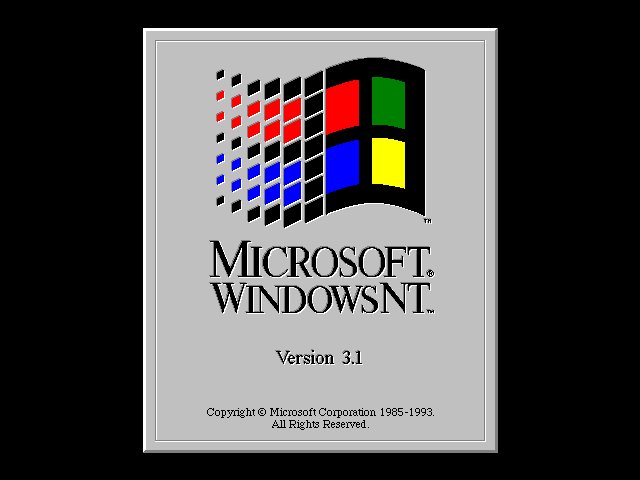
Windows NT 3.1 Boot Screen
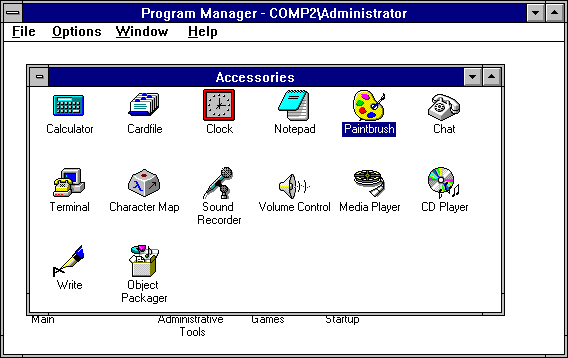
Windows NT 3.1 Program Manager - Accessories
Microsoft Windows NT 3.5
Windows NT 3.5 was release on September 6th 1994 and added OLE 2.0 support as well as reduced memory usage and improved performance over the previous version. Window NT 3.5 contained 9 million lines of code and used the same Windows 3.1 based GUI as Windows NT 3.1 used with a few minor updates. Like NT 3.1, NT 3.5 came in two versions; Windows NT 3.5 Workstation, and Windows 3.5 Server, which replaced the Windows NT 3.1 Advanced Server.
Microsoft Windows NT 3.51
Windows NT 3.51 was release just prior to the release of Windows 95 and was basically Windows NT 3.5 with extra support to run soon to be released Windows 95 applications along with a few other bug fixes and updates. Windows NT 3.51 was capable of running most Microsoft Office suites and programs between Microsoft Office 95 and Microsoft Office 97 and a picture below shows Windows NT 3.51 running Microsoft Word 97. Windows NT 3.51 uses the same GUI as Windows NT 3.5 that was still based on the Windows 3.1 look. A few other features to note are the inclusion of a GUI based partition management tool and the ability to change resolutions on the fly just instead of having to use the Windows Setup program like Windows 3.X requires.

Windows NT 3.51 Logo
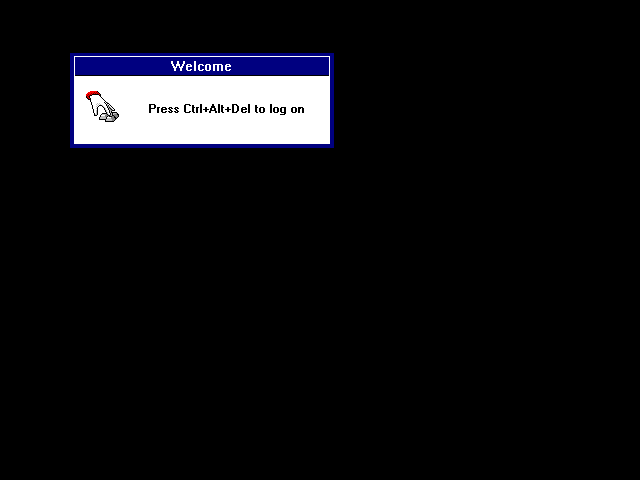
Windows NT 3.51 Log On Screen
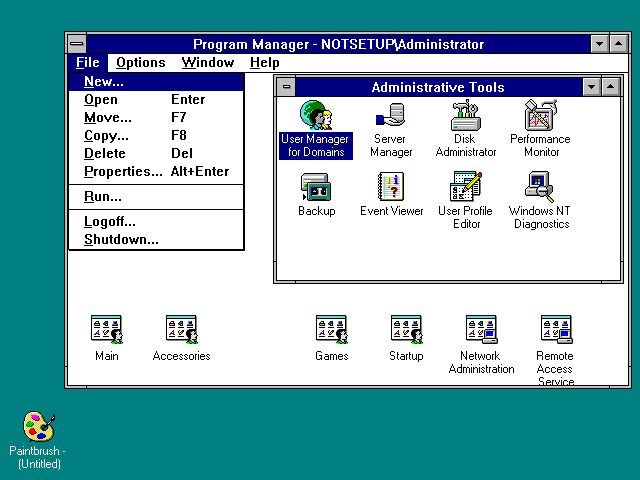
Windows NT 3.51 Program Manager - Administrator

Windows NT 3.51 running Word 97
Microsoft Windows NT 4.0
Windows NT 4.0 was released on August 24th 1996 and consisted of over 16 million lines of code. It was available in two versions; Windows NT 4.0 Workstation, and Windows NT 4.0 Server. The only differences between these two versions were the packaging, optimised settings, and of coarse the price! NT 4.0 was the first version of NT to feature the Windows 95 style GUI that was introduced exactly one year beforehand with the launch of Windows 95. Other than that, most of the features in NT 4.0 are the same as in NT 3.51 but just under different names and accessed in different locations through the task bar. Like Windows 95, NT 4.0 was bundled with Internet Explorer with the updated Internet Explorer 2.0 and was the first version of NT to be configured for Internet access out of the box. The control panel was also revamped with some applets being combined while others just renamed, and a few being removed. This was the first version of NT to be almost 100% software compatible with Windows 95 applications and since over 6 service packs have been released, many still use this version of NT to this day, even on the most modern hardware! The pictures below are of Windows NT 4.0 Workstation.
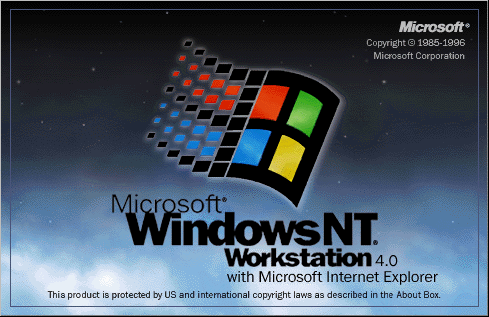
Windows NT 4.0 Boot Up Logo
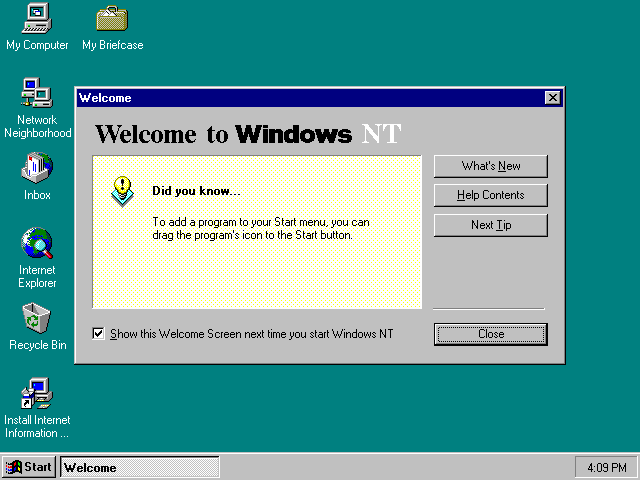
Windows NT 4.0 Desktop
Microsoft Windows 2000
Windows 2000 was released on the 17th February 2000 and was originally meant to unite both the Windows 95/98 and Windows NT operating systems under one code base but due to many issues Microsoft postponed that until the next release. Windows 2000 like all previous releases of Windows NT was aimed at the power user and came in 3 different versions; Windows 2000 Professional, Windows 2000 Server, and Windows 2000 Advanced Server. Windows 2000 Professional came on where NT 4.0 left off with much improved multimedia support and support for 3D acceleration under Direct 3D and OpenGL and better support for games with a complete Direct X API. Windows 2000 integrated Internet Explorer 5.0 with a totally revamped desktop and icon set that was later used for Windows Me. USB support was finally added along with the new NTFS5 file system, and the log on screen screen and boot up screen were updated as well. This is the current version of Windows based on the NT Kernel and two service packs have been released so far but the next version of NT will be released in 3 days time on the 25th October 2001. Here are some pictures on Windows 2000 Professional.

Windows 2000 Boot Up Screen
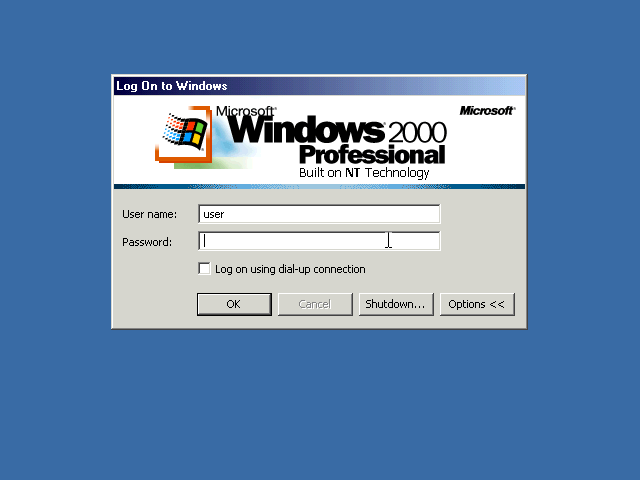
Windows 2000 Log On Screen
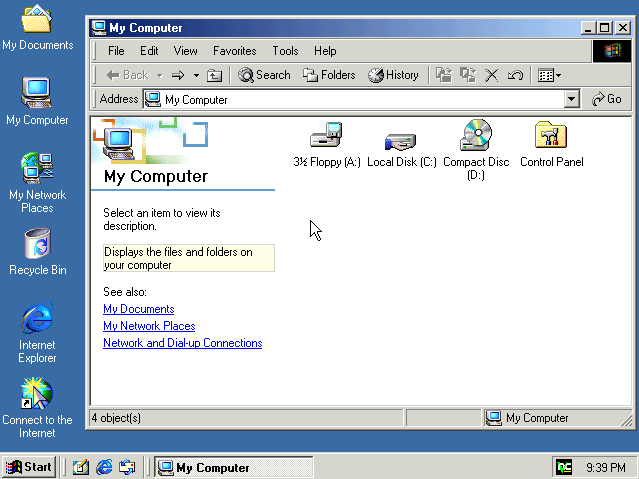
Windows 2000 Desktop - My Computer
Microsoft Windows XP
Microsoft Windows XP will be officially released on the 25th October 2001 but it has been available to OEMs since September 25th 2001. This version of Windows is set to unite both the Windows 95/98 and Windows NT code bases into one unified operating system. Windows XP is available in two versions; Windows XP Home, and Windows XP Professional. The desktop has been cleaned up with the Recycle Bin being the only icon after a clean install. The Start Menu and Task Bar have taken on a much colourful look and the Start Menu has been totally redesigned for better usability but for many this is questionable. The icons are now in high colour to give a much polished looks as well. These graphical enhancements tax system performance substantially and can be turned off giving Windows XP a much traditional Windows feel with the classic theme if you want to. Windows XP includes more multimedia enhancements like Windows Media Player 8.0 and Windows Media Encoder 8.0 and Direct X 8.0A. Improved 3D acceleration is included for native Direct 3D and OpenGL support as well. CD Burning has been included in Windows for the first time but this give compatibility issues with CD Burning software from companies like Adaptec. There are quite a few differences between the Home and Professional editions. The Home edition is targeted at Windows 95/98/Me users while the Professional is targeted at Windows NT 4.0 and Windows 2000 users. Features included in the Professional edition that aren't in the Home edition include multiprocessor support, file system encryption, access control, remote control services, dynamic disk support, and active directory domains. Window XP is not without controversy though with the publicly criticised Windows Product Activation where the OS is locked to your hardware with a security number. If you change to many components over a sort period of time, you will be locked out until you reactivate the OS with Microsoft. Overall Windows XP looks to be a great OS and if the product activation in Office XP is anything to go by, you don't have anything to worry about! Please not that all pictures except the "Windows XP Professional Desktop" are from the Windows XP Beta 2 but look quite similar if not the same as the final product.

Windows XP Beta 2 Log On Screen

Windows XP Beta 2 Product Activation

Windows XP Beta 2 Desktop - Start Menu
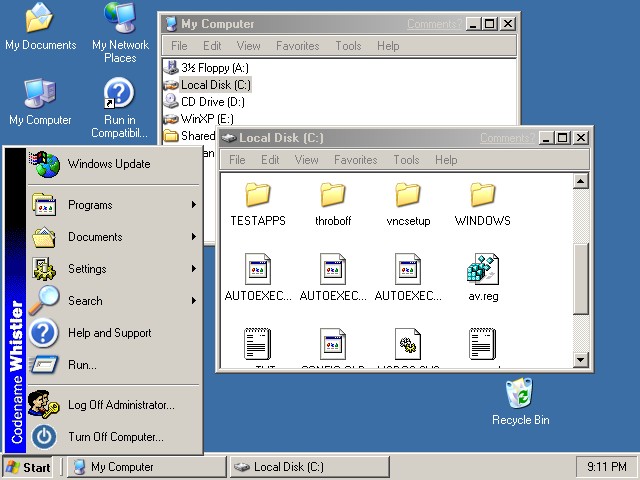
Windows XP Beta 2 Classic Desktop

Windows XP Professional Desktop
Conclusion
As you can see Windows NT has a history almost as great as the old MS-DOS based Windows and with the introduction of Windows XP the old MS-DOS based Windows will be ancient history with both Windows XP and the NT technology to be built upon in further operating system releases. We are entering a new age of Windows system stability and usability and it will be the NT technology that will lead the way for at least the foreseeable future.
©2001 Speed King
[RELOAD FRAMES][HOME]

















